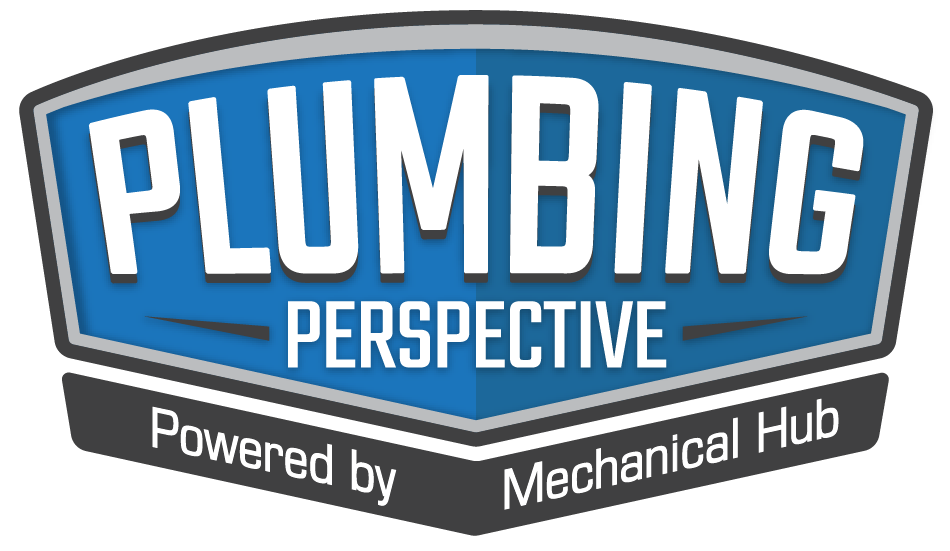A post shared by Mechanical-Hub (@mechanicalhub) on Feb 20, 2017 at 6:51pm PST At nearly half the decibels and almost twice as fast the new Milwaukee M18 FUEL Surge hydraulic impact driver smoked its predecessor, the M18 FUEL ONE-Key impact driver in a head-to-head tool fight. As I explained in the video above both impacts Read more
Industry Blogs
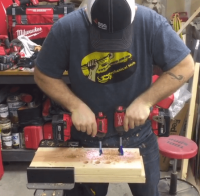
At nearly half the decibels and almost twice as fast the new Milwaukee M18 FUEL Surge hydraulic impact driver smoked its predecessor, the M18 FUEL ONE-Key impact driver in a head-to-head tool fight. As I explained in the video above both impacts were loaded with fully charged 5.0Ah battery packs and had new Irwin Speedbor MAX 1/4′ hex chuck drill bits. The 2″X stacked Douglas Fir replicates typical wood framing found in residential and some light commercial structures. The Surge is a quieter, faster and stronger impact driver. I almost never drill small diameter holes with an actual drill. I do this because the impact driver is by my side all the time and the drilling performance is excellent. Carrying another tool into the job, chucking up bits and charging more batteries slows me down and time is money.
Tools tested:
M18 FUEL Surge 1/4″ Hydraulic Impact Driver 2670-22
M18 FUEL ONE-Key 1/4″ Impact Driver 2757-22
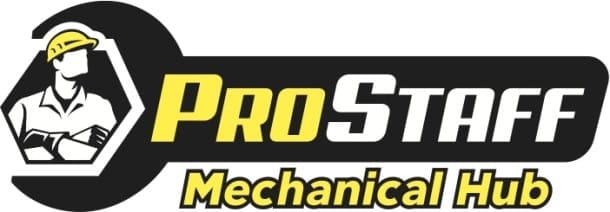
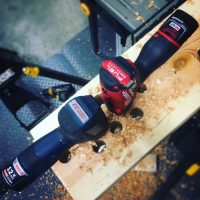
Sometimes in order to get a true sense of how a tool stacks up against others in it’s category there is no better way to find out than pitting it against other tools in a head-to-head battle. You may have read a recent review of the Bosch 12V impact driver (PS42) here on The Hub Read more
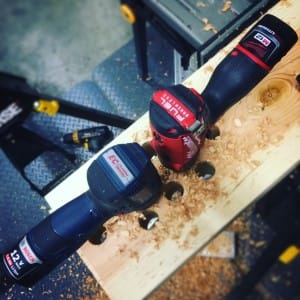 Sometimes in order to get a true sense of how a tool stacks up against others in it’s category there is no better way to find out than pitting it against other tools in a head-to-head battle. You may have read a recent review of the Bosch 12V impact driver (PS42) here on The Hub and if you have you’ll know there was mostly positive feedback from the three ProStaffers who worked with the PS42 but also a couple notes of contention from myself. Mainly my reservations against the Bosch impact driver were based on my longtime work experience with the Milwaukee M12 Fuel impact driver [2453-22] and its now almost five years at being one, if not the best in the 12V category. So naturally I was curious if my claims of under-powering were true about the Bosch 1/4″ driver.
Sometimes in order to get a true sense of how a tool stacks up against others in it’s category there is no better way to find out than pitting it against other tools in a head-to-head battle. You may have read a recent review of the Bosch 12V impact driver (PS42) here on The Hub and if you have you’ll know there was mostly positive feedback from the three ProStaffers who worked with the PS42 but also a couple notes of contention from myself. Mainly my reservations against the Bosch impact driver were based on my longtime work experience with the Milwaukee M12 Fuel impact driver [2453-22] and its now almost five years at being one, if not the best in the 12V category. So naturally I was curious if my claims of under-powering were true about the Bosch 1/4″ driver.
Some notes on the comparison:
Both impact drivers are built with brushless motors. The EC Brushless motor and drive system puts out no-load rpm numbers of 0-2600 [speed 2] and beats per minute (bpm) of 0-3100 [speed 2]. Typically the telling rating of torque is what most buyers will look at which the Bosch puts out 975 in. lbs.
The Milwaukee on the other hand puts out a class leading 1200 in. lbs of torque with the FUEL motor and drive system. No-load rating for rpm’s are 0-2650 [speed 2] and bpm 0-3550.
Each impact was mated to a 2.0Ah battery pod, and each were fully charged. My personal preference for drilling small diameter holes for water piping and heating lines has me constantly reaching for my 12V impact driver and loading it with the Irwin Speedbor MAX tri-flute self feed drill bit. Each of the impacts were loaded with unused 1′ diameter, 1/4′ hex chuck drill bits.
The test I used was that of a typical residential or wood-frame commercial wall in which I stacked two 2″x8″ Douglas Fir boards in my Rockwell JawHorse vise. With identical bits, fully charged battery packs and identical requirements I started both impacts at the same time in a head to head match. Here is the test:
I never expected that!
To be completely honest I expected the M12 to win. By the numbers it had every advantage but in this case the rpm’s of the Bosch and the smooth motor and drive technology may have been the difference that kept pace with the er hitting Milwaukee. My view on the Bosch has changed slightly from our PorStaff review; I have always maintained that the PS42 by Bosch is well built but now I feel my comments of being under-powered were slightly misguided. I have used the impact for a few months and at times felt it fell short of my previous favorite (the M12 FUEL) but I did know the ratings and hadn’t pitted them in a head-to-head battle. Both are very impressive tools and worth a look without a doubt. A lot of professionals skip the 12V tools and write them off only to insist that anything less than 18V power is not worthy of their time or money. Honestly, that’s a result of experience with old outdated technology and misinformation or lack of new tool education. Today’s brushless 12V tools are powerhouses that get the job done in a lot of arenas. I’m happy we were able to test the Bosch because now I have a second favorite impact on the truck!

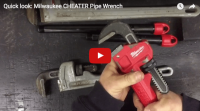
Here’s a quick look at the Milwaukee Tool Cheater pipe wrench 48-22-7314. When I first got my hands on the Cheater wrench I was blown away by its simplicity. I thought “Why hadn’t someone thought of this decades ago?!” This wrench had the potential to replace my traditional, fixed-length wrenches but it’s not there just Read more
Here’s a quick look at the Milwaukee Tool Cheater pipe wrench 48-22-7314.
When I first got my hands on the Cheater wrench I was blown away by its simplicity. I thought “Why hadn’t someone thought of this decades ago?!”
This wrench had the potential to replace my traditional, fixed-length wrenches but it’s not there just yet. Milwaukee is pushing the fact that this wrench takes the place of three wrenches but I’m not yet convinced. To me it’s either a short, medium length or too long of a wrench for 1/2″-1″ pipe sizes.
I’d prefer some modification to the handle to increase grip and control. With some improvement I’d be more inclined to use it up high or overhead. Check out a related Instagram post for more thoughts and comments by many of my followers.
If you look close you’ll see some chipped paint on the wrench head. I’m not sure if this is epoxy or powder coat but it’s chipped in about ten spots, rust will form there no doubt. I’ve had this wrench since June/July ’16. It’s been used weekly at least. I should have included this in the video: This wrench retails for $99. That’s a bit high in my opinion. I get why the pricing is set there, marketing it as a 3-n-1 but it doesn’t truly replace three wrenches and therefor I’d say the current price is upwards of $30 too high. Just my opinion. Please click the video below for a look.
https://www.youtube.com/watch?v=ijoqAGaZ2CY
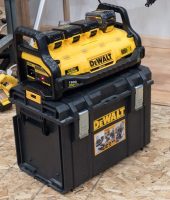
The new FLEXVOLT system from Dewalt has opened up a whole new line of tools and possibilities for the pro contractor looking to get more done in less time. We’ve had a few of the FLEXVOLT tools at work in our shop and in the hands of the ProStaff team for a couple months now Read more
The new FLEXVOLT system from Dewalt has opened up a whole new line of tools and possibilities for the pro contractor looking to get more done in less time. We’ve had a few of the FLEXVOLT tools at work in our shop and in the hands of the ProStaff team for a couple months now and continue to be impressed. The latest is the DCB1800 Portable Power Station.
The power station is a combination 4-bank parallel battery charger and DC power inverter capable of providing 1800 watts continuous power at 15A with a peak power rating of 3600 watts 120v. That’s some serious power, this thing is sick.
There are a still a lot of tools on the job that haven’t lent well to cordless technology yet. Core drills, large demo hammers, compressors and various saws. Add to that the many contractors still using corded tools where upgrades either haven’t been in the budget or replacement of a perfectly good tool is unwarranted and you’ve got the need for portable power.
The DCB1800 power station is a portable generator running off (4) 20v MAX batteries, not a gas engine so indoor use is not a problem. The inverter is silent in comparison to any other portable power solution as well making it a non-factor where noise is a obstacle to getting the job done. This is a gamechanger for those looking to knock out some punch list items at the end of the job or quickly get in and out to complete a task with a corded tool when cordless isn’t available.
I wanted to get an idea of how much power this thing has so I loaded it up with (1) FLEXVOLT 20/60v MAX pack and (3) 20v MAX batteries, all new and fully charged and plugged my DW734 thickness planer in to it. I ran (14) 2×8 Fir boards thru the planer before losing power supply. The low power indicator lights started flashing after 10 boards, giving me four more complete before shutting down. That’s 112 feet of planing 2×8’s! I’d imagine ripping some plywood for backing or chipping with a rotary hammer for 20-30 minutes is within reach with a power supply like that. I’ll be putting this to the test on the job soon so stay tuned, for now check out video proof of my test:
https://youtu.be/bHT9eJi9cvM
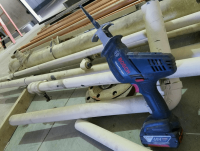
Greetings everyone! Let me just say thank you to Mechanical Hub for reaching out to me for another tool review and inviting me to be on their new Pro Staff team! Since my early start in the Trades as a “Seasonal Helper” in residential plumbing and a Commercial HVAC installer to my now current full-time Read more
 Greetings everyone! Let me just say thank you to Mechanical Hub for reaching out to me for another tool review and inviting me to be on their new Pro Staff team! Since my early start in the Trades as a “Seasonal Helper” in residential plumbing and a Commercial HVAC installer to my now current full-time career as a Licensed Fire Sprinkler Fitter Foreman, I never thought I would be a part or involved with such a great opportunity and team. I’m grateful for all of it. Now let’s get down to this Bosch GSA18V-083B Reciprocating Saw review.
Greetings everyone! Let me just say thank you to Mechanical Hub for reaching out to me for another tool review and inviting me to be on their new Pro Staff team! Since my early start in the Trades as a “Seasonal Helper” in residential plumbing and a Commercial HVAC installer to my now current full-time career as a Licensed Fire Sprinkler Fitter Foreman, I never thought I would be a part or involved with such a great opportunity and team. I’m grateful for all of it. Now let’s get down to this Bosch GSA18V-083B Reciprocating Saw review.
 I was on a recent Retro fitting job for a major Grocery Chain moving into an existing shopping center. Part of my Job scope was the demo of now dead existing main and branch lines. The mains consisted of Schedule 10 and the branch line were threaded schedule 40. Normally we would go into the air with a 100’ cord hanging off the side of the lift (because the outlet was abused and dead in the lift) attached to a porta-band. This would be heavy and clumsy overhead use, as most time two hands are needed to hold the porta-band and try to balance the pipe being cut. So this time around I was excited and yet tempered my expectations to be able to use the Bosch GSA18V-083B Reciprocating Saw.
I was on a recent Retro fitting job for a major Grocery Chain moving into an existing shopping center. Part of my Job scope was the demo of now dead existing main and branch lines. The mains consisted of Schedule 10 and the branch line were threaded schedule 40. Normally we would go into the air with a 100’ cord hanging off the side of the lift (because the outlet was abused and dead in the lift) attached to a porta-band. This would be heavy and clumsy overhead use, as most time two hands are needed to hold the porta-band and try to balance the pipe being cut. So this time around I was excited and yet tempered my expectations to be able to use the Bosch GSA18V-083B Reciprocating Saw.
Some first impressions was that it was beefy yet manageable (4.4lbs) to hold and manipulate with one hand. The handle is large enough for different grips and rubber grips on both the back and front to avoid slipping, which is important when dealing with oil and water. The overall length without blade is 15-3/4” long. The trigger itself is large enough to be activated in most grips and angles. To be honest the look is uncanny identical to the Milwaukee M18 Cordless Hackzall Reciprocating Saw. Some nice features I noticed were the LED Light for the cutting zone and a lock out switch to prevent inadvertent startup.
Working with the Bosch GSA18V-083B I was provided with generic Bi-metal blades. So I already knew any cutting shortfalls could not all be shouldered by Bosch. The tool accepted the generic blades in its easy-to-operate blade-change system without problem. I decided to use the wireless charging batteries from the Bosch EC Brushless Socket-ready Impact Drill/Wrench (IDH182) that I previously reviewed. Maybe the staff will link that review here for you too. So when I previously stated that my expectations were tempered, it was because I expected the saw to fight or stall when cutting into steel. Whereas with a porta-band blade it has the finer teeth with a constant rpm and motion. To my surprise when cutting the 3” main it breezed right through. The schedule 10 steel was an easy cut for the generic blade and the Bosch. It was a nice little warm-up. Now with a little duller blade and a much thicker schedule of pipe, 40, I assumed when cutting I would get the snag and fight. In my head I would probably blame most of it on the cheapness of the bi-metal blade. Again Bosch impressed not only myself but my fellow Journeyman. A fast 3,050 strokes per minute was enough to handle said generic blade and about 12 cuts of 2” to 1-1/2” sched 40 pipe. On a side note; the battery lasted in power on one charge.
Overall in practicality and performance the Bosch GSA18V-083B Reciprocating Saw did the job. It was nice to be able to get into bar joists due to the compact design and make strategic cuts. The beefy weight was not too overwhelming for one handed grip cutting. The rpm was fantastic as it maximized material removal per stroke. The blade guard was not too bulky to get around the pipe and joist spaces. I can definitely see the potential for everyday general uses, and as far as job site use this tool is a must!
